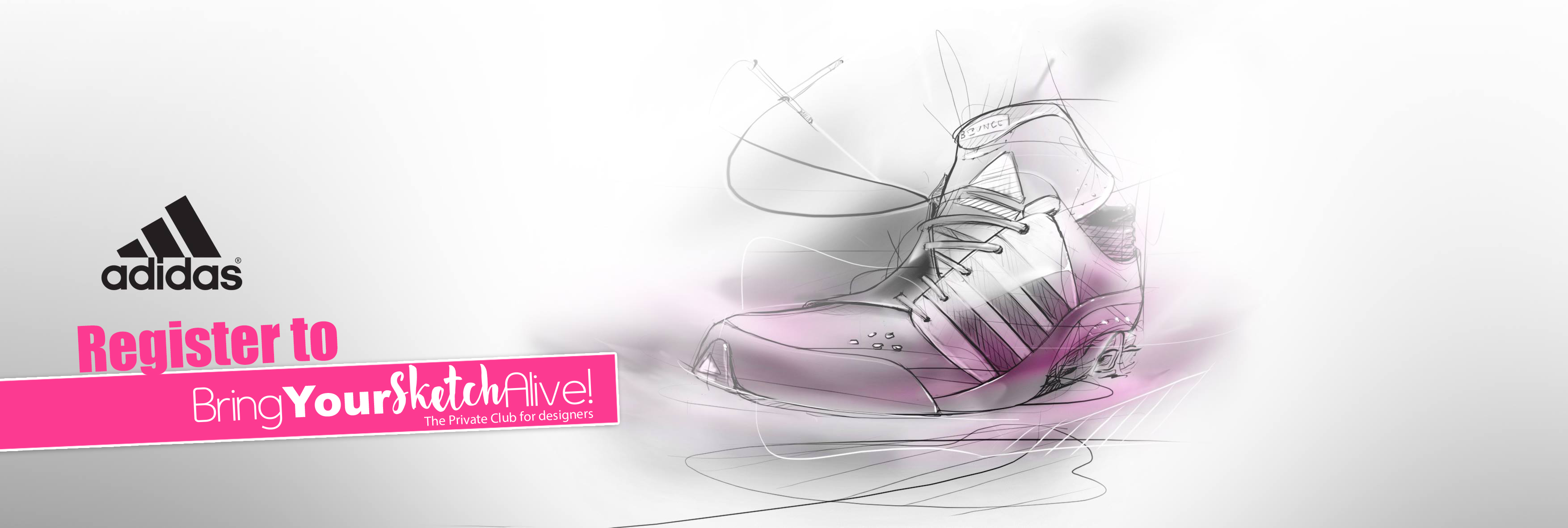
- 1. What's the hardest part about designing a new product?
- 2. Digital Art vs Conventional Sketching. What is your opinion on the differences and advantages of both?
- 3. What's your biggest strengths and weaknesses when it comes to Design?
- 4. Can I become an automotive designer without going to design school by self-learning and taking online courses?
- 5. How much do you draw each day?
- 6. I'd like to be as fast and accurate as possible, what is the best approach?
- 7. Will the Design Sketchbook show open to all?
- 8. Hmmm… How are you and how was your day? :)
- 9. Can you show us/me the level where you start drawing? And how do you draw now? :D
- 10. How can I sketch the shoe in different -different perspectives?
- 11. Any plan of making a book in the future?
- 12. Tell me about your professional experience until now
- 13. How important is traditional sketching to modern Industrial Design?
- 14. Can you give me any references where I could learn more basics in sketching
- 15. How to stay focused?
- 16. I like the program you're currently running with Sketch Like The Pros. Will the new one build on that?
- 17. How to draw dynamic poses?
- 18. Would it be possible to have a web's Spanish version of your Perspective book for beginners?
- 19. What should I do to stand out the crowd? I really want to develop my sketching skills.
- 20. Would you ever consider giving feedback sessions? For people who are struggling and maybe give advice on where they need to focus and improve.
- 21. I'm having trouble doing consistent line weight. If I have a product with two or three connected pieces in Perspective, how do I know what to make thick and thin?
- 22. How to draw surfaces in 3D?
- 23. How can I do better projects at school?
- 24. How do you motivate yourself to practice sketching when you're tired and don't feel like sketching?
- 25. I believe that sometimes designers worry more about producing great sketches/drawings/renderings than on the design idea itself, what do you think?
- 26. Erika Reyes, 25, USA. Working part time at a learning center while I get my BID in Industrial design (I have a BA in psychology and sociology):
- 27. For me has been really difficult to learn to draw, because my lines are too rusty. I wanted to ask you, how can I get better in that area?
- 28. When did people first contact you about a design job?
- 29. Do you live in Malaysia? :) and how can I overcome procrastinating when it comes to practice
- 30. Am I late to learn good sketching? Can really everybody sketch well?
- 32. How did you become an industrial designer? Is there a way to learn the matter needed without having a bachelor's degree?
- 33. How do you get confident and proficient at speed sketching a product?
- 34. How should I plan my design exercise routine?
- 35. What are the pens that you usually use for sketching and why?
- 36. It would be awesome if you could criticize our sketches or create a platform to discuss, criticize, and encourage sketching with all passionate people.
- 37. Steven Martinez, 26, USA, Design/Engineering Student. How to come up with sneaker concepts a lot quicker.
- 38. John Tollefsen, 55, Norway, electrical engineerGive advice how to improve for someone who has given up drawing several times because of no progress.
- 39. NIKITA,24, India , Im a telecom engineer and lover of product designHow to make one product look realistic specially through shading.
- 40. Pascal, 30 from Switzerland. How long did it take to become a sketcher like you are now?
- 41. Joseph, I am 21 and I study Product Design at Bristol Uni.Whilst sketching is invaluable, is traditional marker pen rendering going to be overtaken by digital rendering in the near future?
- I see more people colouring scanned images in photoshop or sketching from the Wacom. It makes sense because it saves paper, the images are editable and workflow becomes more efficient. Is this where design sketching is going?
- 42. Simone, I'm a 28 years old Italian mechanical engineer.There are a lot of questions I would like to ask you:
- a- I'd like to enroll in a new degree in Industrial design but I don't have time, do you think I can learn just reading and studying by myself?
- b- Is it possible to create connections and work just "selling" sketches? I work all day long with surfacing in NX, but I think I don't have time to surface also as a freelancer during the nights.. In a first stage I would like to start working only on sketches.
- c- How can I find some interesting project to start with? I always need motivation!
- d- What is the best way to build a first portfolio starting from zero?
- e – What is the common flow during the design process?
- f- The internet is full of great designers, also 20yo and I'm quite new to this world and not so young, how can I understand if I have some chances?
- g – I'm kind of a perfectionist, so I always end up with not showing my works. What is the best ramp up for a new designer like me?
- 43. Achyutanand Upadhyay, 21, student
- Is it necessary to take admission in good design college. Because best design college are hard to crack..???
- 44. Mei yu / Mj, Philippines, 2d environment and character artist/ concept artist / illustratorHow do you get through studying the fundamentals, without getting stuck in a study rut? XD because sometimes it's too repetitive and you don't know if you're ready or not to do the real illustration. D:
- 45. Lucas Hippolyte, 16 years old, France, studentI would like to continue to share my sketches and learn even more !
- 46. Ankit,25,India,Preparing for design college for post graduate course,have graduated in mechanical engineering and love design thinking.What are your hobbies besides sketching?
- 47. Andrea Vázquez, 23 years old, I´m from Mexico and I'm a software programmer. Were you born with the gift of drawing or was it through drawing classes?
- 48. Reyna M. Rodriguez,23,USA, CA, work part time, draw, paint, sculpt, create. Do you have any tips on digital painting? Would you recommend the adonit jot and sense brush stylus?
- 49. Paras Kapoor from India. It is been 21 years for me being here on this planet. I am persuing B.E (mechanical) and further wish to do M.Des. (Transportation, interactive or product design) from NID or IISC or IIT in india. As i mentioned M.Des. , the whole procedure of admission acc. To me is quiet much complicated. CEED and DAT exams + following the desired colleged for admission + my B.E will be completed in 2018 and i will be giving exam afterwards so if i start inquiries right now it will be senseless. Bro. . . . Its complicated Tell me a bit about it and if you find any M.des. student from india please introduce me to him/her.
- 50. Larry W Lockett Jr. / 31/ USA / Solider, Engineer, ID Student, HusbandHow long does it take for the typical student to become good at sketching?
- 51. Zaid Siddiqui, 28 ,India , Mechanical Engineer. Will be able to collaborate like in forums like DevianArt
- 52. Mohsin. Pakistan. Teacher (IT). How to convert sketching into a hobby?
- 53. Cris Weer, 39, Born German, Paris, New York, and now Bangkok and Guangzhou. No question, maybe where your name is from.
- 54. Jon Zufiaurre from Basque Country. I am a young design engineer of 22 years.Which are the webs you use to inpsire or de magazines you read to learn more or people you follow? Any job for beginners? ;P
- 55. Alexandra. I live in Moscow, Russia. I am 27 years old, I have husband and 2 little babies. I graduated medical school in 2012.
- a- How did you study design?
- b- I bought Wacom Intuos pro. Is it possible to use it for your course? Or lists of paper is better?
- 56. Lia 27 France, Learning applied arts. How make my sketch more "alive" more dynamic.
- 57. Philip, 30,Hong Kong, art & design. Why you became drawing expert and kindly to share your talent?
- 58. Juan, 40, Spain, Naval Architect & Marine Engineer. For the project you are planing via Facebook: Is it needed to have a Facebook account? (I don´t have one)
- 59. Luix Vargas, Chile, shoe technician and designer. What is your motivation to share your knowledge?
- 60. Milind.23 from India. Can you teach rendering?
- 63. Heena Rai, 31, England, enjoy the great outdoors and designing. I have just brought a Intuos creative pen and Touch Wacom!!
- a- Can you please send me any tutorials how to use it?
- c- What 3D software do you use?
- 64. Ale, Italy, 39yo, UI designer and front-end developerHow can you manage to find the time to sleep? :D
- 65. Zero, 23, China, I'm applying for design master degree. I wonder how you think when sketching.
- 66. Im Vignesh (22) form India. Im working as a software engineer in an IT company. What made you keep on going when ever you felt exhausted (I mean the feel to give up in design field)….
- 67. My name is Edu, I'm 21 and I'm from Catalonia (Spain). I'm finishing my studies of Industrial Design Engineering. I don't know how to make human parts to complement my sketches (like hands or bodies to show the usability of the product. Do you have any tip?)
- 68. Mario van Mal, 24, Netherlands, Industrial Design Engineering student, do sports and make music. How do you come up with the important content when you have to write a paragraph/chapter/report? In other words how do you decide what information is important for a reader, to understand your product design from a report.
- 69. I am Nathan from India. My age is 22. I am currently studying Product Design. What is the best way to keep improving sketching?
- 70. I'm Gianluca Gaeta, 26, from a small city near Florence, Italy. I'm studing industrial design in Florence and sometimes I have to work in order to pay university taxes. That's it! Oh! Yeah, I really love drawing things, all kind of things. :)How did you go from student to actually work as a designer? I'd really like to be part of a technology or car company!
- 72.My name is Sumayya Hyder. I am 24. basically a software engineer, now doing communication design in Kerala, India. Can i pursue both animation and interaction design? It's too early for me to think about that since m still in my foundation year :)
- 73. Yuksel, 30, UK, Product Designer. What inspired you to help others?
ASK ME ANYTHING!
Today, I publish your questions with my answers in the blog, so all of you guys from the community can benefit from other people’s questions.
Here we go! Here is a selection of 73 questions you asked me about Design Sketching! [Part 1].
> Click here for the Part 2
Let’s start!
1. What’s the hardest part about designing a new product?
Luke, 17 from London
The most common mistake we see from beginners is: Stick to the first idea or first sketch.
I remember the time when I felt lost in front of my blank page. I made a sketch that looks awesome, and I fell in love for cosmetic reasons.
I unconsciously hoped and convinced myself that idea was THE BEST IDEA!
So, I selected it without considering any other alternatives. And sometimes even though my research drove nowhere, I became stubborn. I hide in my bubble and reject feedback so I wouldn’t have to face reality, and redo all from scratch – facing my blank page again.
If you face that situation, know when you need to put an idea aside and move on.
My recommendation is:
Don’t rush for your first ideas, they are just the starting point.
Make sure you develop multiple axis of research as you will discover even more awesome proposals on the way! You would be surprised how much more creative you can be when you get out of your comfort zone.
TIP: To expand your creativity, remember to use these techniques:
- What if? Generate unexpected scenarios and be provocative. Always create with the users in mind. That’s how your sketches will have meaning and will give life to your imagination.
- Draw with thumbnails. So, you won’t “fall in love with a pretty sketch, but for a beautiful idea”
2. Digital Art vs Conventional Sketching. What is your opinion on the differences and advantages of both?
Pat, 26 from USA, aspiring designer
To me, both are essential for the design industry, and the trend goes like that:
Conventional sketching is a no-brainer. It’s fast, easy, and convenient. It’s great for expressing ideas on the spot and making research.
Digital sketching is awesome for presentation purposes where you can give great rendering to your sketches. Photoshop and Illustrator allow you to test and modify colors and textures fast.
A common practice is to sketch on paper, scan, and render on a computer.
Once again, this is a trend. Feel free to explore other ways. For the day I tried to mix watercolor with product design sketch. Take what’s happened in the industry as a guideline, and feel free to explore other ways too – so you may create your own style.
3. What’s your biggest strengths and weaknesses when it comes to Design?
Shubham, 24 from India
My strengh?
I guess creating stories. This is where I feel the most of fun at sketching them. At this stage, you may not even draw the product itself, but thumbnails of people using it. If you don’t know how to draw people, it doesn’t matter. Drawing stickmen will do at early stage.
TIP: For presentation purpose, you can cheat taking picture of yourself in situation and use them as underlay.
My weakness?
Know when to stop making research on time so I could get a comfortable timeframe for rendering, and not feeling rush before the deadline (so I could get a proper night of sleep before the presentation day). I often went to school to present my project without sleeping the previous night. Ohoh.
TIP: That was a pretty much “bad habit” as I tend to put aside my personal life for work. But if you want to perform long-term, you got to find a good balance.
Here is an extra point. Good working/life balance to me DOES NOT mean half/half each. As this equals to average intensity for both.
The good balance would be identifying the time when you put all your heart into your work, and some others into your personal life, your family. That’s how you can always live with full intensity! If you are a student in a design school, make sure your girlfriend and parents are aware of the amount of work you need. On your side, make sure you spend quality time with them. :)
4. Can I become an automotive designer without going to design school by self-learning and taking online courses?
Abhishek Sunny Pingua, 22 from India
Basically, a portfolio matters more than a degree. So yes it’s possible – However, with or without an online course you will need a mentor to get results faster and better.
It all depends on what you will be able to produce and how much creativity you can show. To me, I would still recommend you to join a design school as the environment will help you reach your goal and get sensitive to innovation and users.
The biggest mistake you would do is to be able to design cars only using actual references. You are more than a great sketcher, but a designer. Make sure to show disruptive innovation. Something that is totally new and/or relevant to our upcoming future.
5. How much do you draw each day?
Jayant
It’s one of the most common questions I receive from my students and my friends. They actually meant: How many hours per day is needed to get results? What I am tempted to say is that the more you draw, the better your level will rise. With good guidance and practice in sketching fundamentals, that will be your logic path.
To define how many hours is needed? Ask yourself: how much eager are you to learn how to draw? Then you will find the answer in your heart. If I draw 10, and you feel you wanna draw 20, please go ahead!
Drawing is a lifestyle. Draw without counting the hours!
To know more:
– The “10.000 hours of practice” are under fire.
6. I’d like to be as fast and accurate as possible, what is the best approach?
David Doodley, 32 English, live in France | Footwear designer
Stop looking for perfection.
Practice drawing with fluidity without fear of mistakes. Look for gaining precision along the way. How? Start with light pen pressure and iterate with bolder one. Your lines and curves will get more accurate soon with practice. Soon, you will need lesser lines to draw and your sketches will get a more minimalistic and clean look. :)
+ Make sure to practice your sketching fundamentals in parallel.
To know more:
– TIP 97: How to improve your quality of lines
7. Will the Design Sketchbook show open to all?
Adrian Baranek, 24, Germany – Design student in Schwäbischgmünd
Yes! The Design Sketchbook Show will be open to all. However, I will introduce you to a new membership design program where I will be able to follow up you guys progress! :)
8. Hmmm… How are you and how was your day? :)
Abhishek Neogi, 20 years old, India
Haha thanks, Abhishek for asking. Abhishek is one of my students.
I am fine, thank you! And happy to take the day to answer you guys hoping it will be helpful.
9. Can you show us/me the level where you start drawing? And how do you draw now? :D
Seher, 22 from Denmark | Student in Engineering in Integrated design
Yes, of course, I invite you to see more in this article: How I started design sketching and kept motivated?
My drawings were flat like a pancake. But I did not desperate and learned that people who succeed in my school are no better than any of us. They started from zero as well.
10. How can I sketch the shoe in different -different perspectives?
Rahul Soni, 20 from India | Footwear designer
Train at drawing the last first (The last is a standard shape of a foot). So you can draw your design on top of it. Make sure you draw the last seeing it in transparency.
11. Any plan of making a book in the future?
Valentina, I’m 20, I live in Chile – Design student
I am thinking about it more and more!
12. Tell me about your professional experience until now
André, 38 years, from Brazil – Product designer
I started design later than most of the students and I graduated at 27.
Since I love traveling where I worked for Adidas in Germany, Daihatsu in Japan (internship) and also a local company in Singapore and China. Design is to me a universal language that has no geographical barrier. I invite you to read more about my design background here. :)
13. How important is traditional sketching to modern Industrial Design?
Murray, 29 – Industrial Design student
It has always been important, and will still be forever.
There is no faster way to express ideas than hand sketching.
You don’t have to see traditional sketching opposing Modern Industrial design.
They are complementary. If there is one thing the world will need forever, is your ability to sketch.
14. Can you give me any references where I could learn more basics in sketching
Kiran I am 22yrs old – Product design student
Yes, the book Sketching the basics, 2nd edition from Koos Eissen is great!
15. How to stay focused?
Borne’ Sanders, 23
I would say cutting distraction from social media is a great start.
There is a technique called POMODORO. It’s about doing more in lesser time.
Basically, use the egg timer for cooking eggs. Set up the time to 20, 30, 50 minutes. Up to you.
Then stick to your task, and try to produce as much as you can till the Pomodoro ring. Take a 15 minutes break. Rest the timer and start another session!
16. I like the program you’re currently running with Sketch Like The Pros. Will the new one build on that?
Erick Beebe, 59, USA |-from IT and in love with Concept art
Yes, they are complementary. :)
17. How to draw dynamic poses?
Chris, 34 Trinidad – From IT
You gotta focus on the line of action of your characters. Use it as a guideline to draw the poses. Don’t hesitate to exaggerate like how the cartoonist does!
To know more:
– TIP 1: Sketch the world! (Showing dynamic football player poses)
18. Would it be possible to have a web’s Spanish version of your Perspective book for beginners?
Optimus 19 Spain – Student
Maybe one day I will translate the whole blog into Spanish. But it’s not yet planned for now. There is already a Spanish version of the Designer Starter Kit. I send it to whoever registered to the blog and requested for it. :)
19. What should I do to stand out the crowd? I really want to develop my sketching skills.
NAVED, 24-year-old from India – In love with animation.
Start by copying the artist you love. Study your sketching fundamentals in parallel.
With the mix of influence and self-exploration, you will create your own style.
Look for an expressive way to convey your ideas through sketching.
To know more: How to develop your own style?
20. Would you ever consider giving feedback sessions? For people who are struggling and maybe give advice on where they need to focus and improve.
Nickolas Teixeira from London – Product design student
Yes, I do! I also think feedback is essential to progress.
I have an online course called Sketch like the Pros where I give one-to-one follow up to my student. The registration are now closed as the course is now ongoing. However, I am now preparing a new course where there will be a community of passionate who can give feedback and cheer up each other! I will be there to give you online courses, tasks, and challenges and be there to follow up on your progress. : )
21. I’m having trouble doing consistent line weight. If I have a product with two or three connected pieces in Perspective, how do I know what to make thick and thin?
Josh, 29, US – writer in tabletop games and in love with Concept art
Here is a good introduction to line weight: How to get your sketches to convince your audience?
I may talk about this topic during the upcoming Design Sketchbook Show!
22. How to draw surfaces in 3D?
The best trick for that is to think of wireframes. You will build your surface like 3D software. A tip is to think of a cloth with a grid pattern that would fall on your object.
23. How can I do better projects at school?
Kevser – Product design student in Turkey
Your school is going to emphasize creativity more than your sketching skills. So you got to be creative to fill their expectation, but also self-learning your sketching skills to be able to convey your ideas with impact.
If you are just starting, I recommend you go through the Ugly doodles technique.
Start ugly to drop down your ideas, and refine your sketches along the way.
24. How do you motivate yourself to practice sketching when you’re tired and don’t feel like sketching?
Lidia – 51yrs – Australian – Senior business analyst (IT):
Always remember WHY are you doing it.
When your WHY is powerful, the HOW does not matter much anymore, and you will cross the obstacles with passion.
TIP: Don’t think of the why for yourself only. But about your impact on others.
Are you doing it for helping people?
Contribute to your country?
Make your family proud of you… ?
Showing your kids that perseverance is beautiful? And so on.
25. I believe that sometimes designers worry more about producing great sketches/drawings/renderings than on the design idea itself, what do you think?
Francisco Juárez, 47, Product Designer.:
I agree. Art & Design is also about visual performance.
The best is to make sure your sketch is serving the purpose of your idea.
At Adidas, you could have 10 beautiful sketches or renderings – if you had no story, your proposal would be rejected. Some companies go for the look, others for the story.
From my experience, the most innovative companies are the ones that goes with the story. They are also the one I admire the most.
26. Erika Reyes, 25, USA. Working part time at a learning center while I get my BID in Industrial design (I have a BA in psychology and sociology):
Many people have told me to practice drawing from life, but I have been having a hard time being able to have things scale properly.
I will look at an object, start at one part, and end up having to make the entire thing bigger because I didn’t leave enough room or I messed up where things are supposed to go.
I thought focusing on one portion at a time what good but when I look at the end result, things aren’t correct in relation to one another.
What exercise or technique should I practice to help?
You are having a common mistake that even if you practice drawing from life for ages, you won’t grow your skill much. You have to go through the sketching fundamentals and start your sketch by simplifying the object first. Draw the global shape in perspective with light pen pressure. Then, add the details. That’s the only way you can make sure drawing with good proportion.
To know more: TIP 162: Wanna get cool sketches? Do not start with details.
27. For me has been really difficult to learn to draw, because my lines are too rusty. I wanted to ask you, how can I get better in that area?
Shira Macedo, 24 years old and I live in Caracas, Venezuela – 2nd year Product design student
You gotta draw using the ghost drawing. It means simulating the movement of your line, curve or circle before drawing them. You have all the details in the Designer Starter Kit!
28. When did people first contact you about a design job?
Nico Weber, 18, Germany and I’m a student.
When I was a student, we had to do an internship in the 3rd year.
However, we had to present our portfolio early during our 2nd year of school.
This is when we start having opportunities with the “real world”.
The school did put us in contact with companies, so we could be interviewed.
We were in a fair competition with our classmates.
The most interesting profiles had the chance to be interviewed by the most interesting companies.
We were not judged on our project marks – but on our portfolio, motivation, and interest.
29. Do you live in Malaysia? :) and how can I overcome procrastinating when it comes to practice
Emmanuel Ojo,16+yrs,Nigeria I’m currently a student in high school
I am traveling in Asia, but also go back to France when I can.
About fighting procrastination, I would recommend you to think about: What is your compelling Goal? Feel free to write it down, and stick it somewhere visible so it will remind you WHY you are practicing to get better than yesterday.
To know more: Tip 147: How to keep motivated having poor results and avoid procrastination
30. Am I late to learn good sketching? Can really everybody sketch well?
Esra, 35 from Turkey – Industrial and User Experience Designer
Of course, you can. There is no age for sketching. If I am not wrong, your body does not have to be flexible as a ballerina dancer :P. Seriously, with proper guidance and support, everybody can learn. To me, learning how to sketch is technically easier than learning a new language.
31. Mikael Nielsen, age 45, Denmark, Industrial designer:
Do you have more guides than the first 1-4?
32. How did you become an industrial designer? Is there a way to learn the matter needed without having a bachelor’s degree?
Stephany, 24, Industrial design student
I attended a design school for 5 years, and push for multiplying experiences such as applying for an extra internship but also being an extra exchange student in the US studying in a fashion school instead of taking my summer holidays. Just saying that even if there are rules, you can bend them to do more and learn more.
Show your motivation and you will find people who will support you.
If you don’t want to get a degree, I highly recommend you meet designers so you can make sure you are on track. As soon as you can, try to negotiate an internship or even work for free. Your objective won’t make money but to learn. So that’s totally fair. You work for free, they take care of you. That’s how you will start building your portfolio.
33. How do you get confident and proficient at speed sketching a product?
Ken Moyer, 40 from USA. Graduate Industrial Design Student
You can look at David Doodley, for the 6th question.
34. How should I plan my design exercise routine?
Saptarshi Sarkar,23, from India. A mechanical engineering student by education and a design enthusiast by passion
Start with learning the basics and sketch anything simple that is related to it. Continue trying to draw them from different angles.
TIP: Do not study alone but with someone who has higher skills than you so you can progress much faster.
I am aware of how difficult it is to find a mentor or even friends who share the same passion. This is why I am preparing a new Creative program where I will give online courses and invite the members to give feedback to each other. I will follow up members’ progress in the group.
35. What are the pens that you usually use for sketching and why?
Vincenzo, 29yo industrial designer from Italy
– Black Ballpoint pen: That’s my main tool.
I use it because it’s fast and easy to get a lot of pen pressure sensitivity.
You don’t have to sharpen it, and I don’t need to erase anything from my sketch. Why?
Because I rather iterate on top of my drawing or draw an extra sketch than suppress my mistakes. Keeping sketching allows me to keep a great flow of ideas, and sketch much faster.
-Black Stylist: Felt pens are also nice to use.
Their lines are clean and dynamic. However, note that the quality tends to decrease along the way as the nib is pretty fragile.
– Pilot Twin marker: This pen is super fun to draw with fluidity.
It expresses a lot of energy in your lines. Draw with the thick nib so it will “force” you to get rid of perfection.
36. It would be awesome if you could criticize our sketches or create a platform to discuss, criticize, and encourage sketching with all passionate people.
Krishnanunni, 24, India – I am a final year architecture student who wishes to pursue an industrial designer career along with my architecture practice.
Yes, all the things you said are planned in the new program “Bring your Sketch Alive” that will allow you to post your sketches and receive feedback from the community and me! :)
37. Steven Martinez, 26, USA, Design/Engineering Student. How to come up with sneaker concepts a lot quicker.
I am not sure what you mean about concept here. But it you are looking for story, keep in mind the user. A basketball player won’t get the same needs as football player for example – or even people who wear shoes casually. Try to focus on one feature, and brainstorm a story around. If you are looking for a running shoe for marathon, you may think of lightness. Then explore from there different materials, or ideas realated to it (feather, thin skin, mesh, polysthyrene, velocity, rebound… and so on)
Start you research from ideas, and translate them into sketches. Feel free to use reference pictures to get inspired from. Try to feel the expression of lines from nature or existing products.
38. John Tollefsen, 55, Norway, electrical engineer
Give advice how to improve for someone who has given up drawing several times because of no progress.
I would say get an entourage who help and support you. Nobody succeed alone.
39. NIKITA,24, India , Im a telecom engineer and lover of product design
How to make one product look realistic specially through shading.
Having a good understanding of light is essential. To make it more realistic, you may work on the boucing light from the ground, but also the ambient light as well. They are very subtle, but they will level up your rendering.
40. Pascal, 30 from Switzerland. How long did it take to become a sketcher like you are now?
It took me 3 years to get a proper level of sketching. I was grabbing information wherever I could, and observe other people sketches. Nowaday, I share my knowledge so you can grow much much faster than I did.
41. Joseph, I am 21 and I study Product Design at Bristol Uni.
Whilst sketching is invaluable, is traditional marker pen rendering going to be overtaken by digital rendering in the near future?
I see more people colouring scanned images in photoshop or sketching from the Wacom. It makes sense because it saves paper, the images are editable and workflow becomes more efficient. Is this where design sketching is going?
Each company has its own way. As long as you can express your ideas it’s fine. But it’s true that softwares allow you to make quick change of colours, textures, and many other things that it’s worth going on digital. If you love markers, go ahead. They give instant results, and you can always mix them with digital tools as well.

42. Simone, I’m a 28 years old Italian mechanical engineer.
There are a lot of questions I would like to ask you:
a- I’d like to enroll in a new degree in Industrial design but I don’t have time, do you think I can learn just reading and studying by myself?
Alone will be really tough. If you wanna get a greater level, you got to surround yourself with other designers. Try to see if there is school giving a degree after one year of study. There are especially made for professionals.
b- Is it possible to create connections and work just “selling” sketches? I work all day long with surfacing in NX, but I think I don’t have time to surface also as a freelancer during the nights.. In a first stage I would like to start working only on sketches.
Yes it’s possible. I myself have no clue about 3D software.
c- How can I find some interesting project to start with? I always need motivation!
You may need to wire your inspiration with creative people. You may visit the website www.designboom.com for example. You will see a lot of student designer competition. You may also want to participate and choose a subject you like. It’s fascinating! And you may win a prize !!
d- What is the best way to build a first portfolio starting from zero?
Keep all your sketches. Produce your work an later on compile them for your portfolio. I recommend you to work on topic that truly passionate you. You may aslo look at your own hobbies. You love Ice skating ? Think about a new Ice skating set !
To know more: I want to apply for a design school, but I have no portfolio
e – What is the common flow during the design process?
You got the design creative process detailed here: https://www.thedesignsketchbook.com/tip-120-how-to-present-a-project-to-your-design-company/
f- The internet is full of great designers, also 20yo and I’m quite new to this world and not so young, how can I understand if I have some chances?
Don’t compare yourself to others from your age. Age does not matter. Anybody has his chance.
There is 2 types of people. The first type focus on “Oh, that will be difficult, it’s not worth trying”. The other type will say: “Oh! That’s difficult, but not impossible, so there is a chance !!” If you step on your dream, for sure 100% chance you will fail. But all people who succeed, are the one who tried and believed it was possible. The best indicator of success, is your passion intensity. If you are fear, it’s ok. Only passion will give you the strenght to keep going.
g – I’m kind of a perfectionist, so I always end up with not showing my works. What is the best ramp up for a new designer like me?
Perfectionist are the best procrastinator. Hehe.
Keep going keep failing. Think like that: a mistake is not a failure. It’s a feedback. To become a designer, you got to accept growing step by step and iterate on your mistakes. have you ever seen anybody play piano with no training ? I guess never. That’s the same for sketching. It’s a life long journey that will give you a lot of surprises along the way ! Take it as a game. More you play, higher your level will rise. :)
43. Achyutanand Upadhyay, 21, student
Is it necessary to take admission in good design college. Because best design college are hard to crack..???
Look for a school that suit your philosophy. To me, a good school would emphasise on people and innovation – instead of marketing and business skills.
44. Mei yu / Mj, Philippines, 2d environment and character artist/ concept artist / illustrator
How do you get through studying the fundamentals, without getting stuck in a study rut? XD because sometimes it’s too repetitive and you don’t know if you’re ready or not to do the real illustration. D:
If you wanna learn how to swim, you gotta jump in the water! So anytime you can start drawing and practice what you have learnt.
45. Lucas Hippolyte, 16 years old, France, student
I would like to continue to share my sketches and learn even more !
Hey Lucas!! Sure, I am pretty sure you will enjoy the New program “Bring you Sketch Alive!” where you can share your sketches with the community!
Lucas is the youngest student of my course. He was 15 when he started. You may look at his fast progression here: Before After 3 months of Sketch like the Pros
46. Ankit,25,India,Preparing for design college for post graduate course,have graduated in mechanical engineering and love design thinking.
What are your hobbies besides sketching?
I love watching movies in cinema!! However I have no TV, as I rather spend this time at other things. I start going to gym 4 times a week.
47. Andrea Vázquez, 23 years old, I´m from Mexico and I’m a software programmer. Were you born with the gift of drawing or was it through drawing classes?
When I was 22, it was obvious I had no innate talent. I was 1 year younger than you today. I learned at my Design School from the different courses we had. It was tough because we never really have a proper sketching class all along the years. I had great teachers, but I wished spending more hours with them. With my classmates we had to figure out a lot of issues and interrogation. It was tough, but we was so passionate!
To know more: The sketches I did for my entry exam for my design school
48. Reyna M. Rodriguez,23,USA, CA, work part time, draw, paint, sculpt, create. Do you have any tips on digital painting? Would you recommend the adonit jot and sense brush stylus?
Painting like Dusso is not my specialty. I had friends who used his technique for their degree presentation. It was super cool!
I would not recommend the Adonit at all. I bough 2 of them, and had a bad experience with it.
Nowadays you got the Pencil from Ipad Pro. You may also consider this upcoming pen from Scriba at http://www.getscriba.com/. you can squeeze it to make it reactive to pressure. I have not try it personnally, but it’s definitely worth checking it!
My personal preference is still the S-pen on Samsung Pro Note. The pen is a bit too thin though, so I hacked it by inserting it in a retractable pen body. One day I should publish a foto of it on the blog. :)
49. Paras Kapoor from India. It is been 21 years for me being here on this planet. I am persuing B.E (mechanical) and further wish to do M.Des. (Transportation, interactive or product design) from NID or IISC or IIT in india. As i mentioned M.Des. , the whole procedure of admission acc. To me is quiet much complicated. CEED and DAT exams + following the desired colleged for admission + my B.E will be completed in 2018 and i will be giving exam afterwards so if i start inquiries right now it will be senseless. Bro. . . . Its complicated Tell me a bit about it and if you find any M.des. student from india please introduce me to him/her.
If there is any student from India who is studying at M.Des, please send me an email, or leave a comment below. I will be glad to put you guys in contact.
Paras, Feel free to browse on Coroflot, or Linkdin if there is any student or alumni. Then just them an email directly. I am sure they will be happy to help you.
50. Larry W Lockett Jr. / 31/ USA / Solider, Engineer, ID Student, Husband
How long does it take for the typical student to become good at sketching?
Oh, got answer this question in the previous article, question 5.
51. Zaid Siddiqui, 28 ,India , Mechanical Engineer. Will be able to collaborate like in forums like DevianArt
Hello Zaid ! (One of my student too)
The new program “Bring Your Sketch Alive!, the Private club for designers” will allow you to get interractin between members and share your sketches.
52. Mohsin. Pakistan. Teacher (IT). How to convert sketching into a hobby?
I believe if you wanna become a designer, don’t consider it as a hobby, but a passion like an addiction.
To know more
Tip 73: Sketching is not a hobby, but a passion.
53. Cris Weer, 39, Born German, Paris, New York, and now Bangkok and Guangzhou. No question, maybe where your name is from.
My Chinese name is Wei Da. However it has been translater to Chou-Tac in France. :)
54. Jon Zufiaurre from Basque Country. I am a young design engineer of 22 years.
Which are the webs you use to inpsire or de magazines you read to learn more or people you follow? Any job for beginners? ;P
I loved the website Admirabledesign. Everyday I went to look at it when I was student. Then you may go to some inspiring website such as www.lemanoush.com or www.conceptkicks.com or www.designboom.com
To know more:
9 must see creative websites for designers
7 Colour and graphic websites to get inspired from for your mood board
A good trick when you look for job is to reverse the situation. Don’t think I need a job, so I wish somebody will hire me. Instead, start thinking like: I am an opportunity, I want them to wish hiring me. Whenever in the interview they ask you what do you expect from the job or internship. Do not tell them what you want for yourself, but what you will bring to them. Does it make sense? :
55. Alexandra. I live in Moscow, Russia. I am 27 years old, I have husband and 2 little babies. I graduated medical school in 2012.
a- How did you study design?
At my Design School in Paris, at CREAPOLE-ESDI. I did a master degree. My recommendation is that even if you enroll a school, don’t expect them to teach you everything you need about sketching. They will teach you a lot about creativity, however about sketching, you will need to explore a lot by yourself. As an aspiring designer, you already have to become a problem solver.
b- I bought Wacom Intuos pro. Is it possible to use it for your course? Or lists of paper is better?
Paper is the number one choice. However, you can go on tablet anytime to study in parrallel.
56. Lia 27 France, Learning applied arts. How make my sketch more “alive” more dynamic.
There is plenty of techniques for that. The Wednesday 1st February 2017, I will introduce some of them during the Design Sketchbook Show! on Facebook Live. I will be glad to have you there ! :)
57. Philip, 30,Hong Kong, art & design. Why you became drawing expert and kindly to share your talent?
I believe teaching others what yourself have learned is a way to give back my contribution. It’s pretty cool when you help people create better products, somehow you contribute indirectly at making a better world. :)
58. Juan, 40, Spain, Naval Architect & Marine Engineer. For the project you are planing via Facebook: Is it needed to have a Facebook account? (I don´t have one)
Yes, you will need one. Don’t worry it takes 2 minutes only to create an account. :)
59. Luix Vargas, Chile, shoe technician and designer. What is your motivation to share your knowledge?
When I was student, I had hard time to look for information. Today, I wish helping you guys rising your level much faster than I did so you can get super well prepared for your career.
60. Milind.23 from India. Can you teach rendering?
Yes I can. I would be happy to.
61. Marco here, 42 years old from Italy. I’m a designer in an aircraft seats company.
How can i improve my drawing skill?
The best tip is to study sketching fundamentals and practice them a lot till they become a second nature.
62. Stuart Denigan, 35, Australia, furniture designer maker and currently a design technology teacher in private senior school. How do you get inspiration to design and sketch from?
I first look at the user. This is where you find most of the answer. A designer is first an observer. So look at how you user react, feel, live, interract with others. So you can gather precious data for your design.
63. Heena Rai, 31, England, enjoy the great outdoors and designing. I have just brought a Intuos creative pen and Touch Wacom!!
a- Can you please send me any tutorials how to use it?
Sure, I could think about publishing some.
b- Do you use Photoshop or Sketchbook Pro?
Both of them! It depends of my mood lol.
c- What 3D software do you use?
None. But if you want to study 3D software, I would recommend you Rhino 3D and Solidworks.
64. Ale, Italy, 39yo, UI designer and front-end developer
How can you manage to find the time to sleep? :D
Hahaha, when I was student I fell asleep in the subway. Every morning, I knew I got 22 minutes of extra nap. I preyed having a seat!
65. Zero, 23, China, I’m applying for design master degree. I wonder how you think when sketching.
That’s an interesting question! I would say I always start visualise my fundamental rules before starting. A lot of them became automatic. But when I feel something looks wrong, I go back to them and fix it.
66. Im Vignesh (22) form India. Im working as a software engineer in an IT company. What made you keep on going when ever you felt exhausted (I mean the feel to give up in design field)….
I did felt exhausted, but never ever had the hint of giving up. As soon as you take a decision to be a designer, stick to it. Do not even consider the give-up option. A trick is to think like you have no safety net, so you will gain a powerful energy that will push your limits. If other people could do it. You can do it too!
67. My name is Edu, I’m 21 and I’m from Catalonia (Spain). I’m finishing my studies of Industrial Design Engineering. I don’t know how to make human parts to complement my sketches (like hands or bodies to show the usability of the product. Do you have any tip?)
Use underlay is the best shortcut. Take pictures of your hands body and so on.
Of course, if you are really willing to learn more, spend time at studying them. Decompose every single parts into basic shapes. For example a finger is equal to 3 tiny cylinders.
68. Mario van Mal, 24, Netherlands, Industrial Design Engineering student, do sports and make music. How do you come up with the important content when you have to write a paragraph/chapter/report? In other words how do you decide what information is important for a reader, to understand your product design from a report.
I never did any report for y design project. All the rpesentation I did at school or professional experience has been oral presentation. In that context, to select the important information for my audience was telling a story. Make sure you add the most valuable information and have the willing to teach something new to them. You are not there to explain something, but to make them discovering something new and awesome!
A common mistake is to talk only about your product. Wrong!! You gotta talk about the user. What makes him so specific, so you can explain what makes your product so relevant. Ok? Your presentation success will be all in this linkage.
69. I am Nathan from India. My age is 22. I am currently studying Product Design. What is the best way to keep improving sketching?
Studying your fundamentals will make you rise super fast. Dont try to take shorcuts avoiding perspective rules. They may look tricky, but that’s actually super simple learned step-by-step.
To know more:
Tip 63: Do not skip perspective
70. I’m Gianluca Gaeta, 26, from a small city near Florence, Italy. I’m studing industrial design in Florence and sometimes I have to work in order to pay university taxes. That’s it! Oh! Yeah, I really love drawing things, all kind of things. :)
How did you go from student to actually work as a designer? I’d really like to be part of a technology or car company!
Internship is the key. Make sure to build your portfolio as soon as possible, so you can get ready to present to professionals. Earlier you learn how to sketch, better you rise your chance to get a nice internship. If your first experiences at school have been great, it will definitely give you a super mega kickstart when you’ll graduate.
72.My name is Sumayya Hyder. I am 24. basically a software engineer, now doing communication design in Kerala, India. Can i pursue both animation and interaction design? It’s too early for me to think about that since m still in my foundation year :)
You gotta negotiate that with your school. My recommendation is that you don’t listen first to practical data like: higher chance of being paid, or higher chance to get a job. What matter the most is what you feel when you do these projects. What you feel when you create and help people trhough the solution you propose.
73. Yuksel, 30, UK, Product Designer. What inspired you to help others?
My first declic was when I was at my first year of design school. I saw some of my teachers sharing their knowledge with a lot passion. Students (including me) was so happy learning from them and felt like having extra skills/power at the end of the course. I kept that idea of teaching somewhere in my head for years, till one day 2 of my colleagues asked me to give them some sketching courses so they could better perform at work. We met in a Starbuck, and it was really fun to see them getting results on the spot. They were so happy! My colleagues and friends was the one to encourage me to share and help a lot more people. :)
Click here to read the 36 first questions about design sketching.
Have a nice day! And see you next Wednesday 1st February on Facebook Live!!
Cheers,
Chou-Tac
Take care.
Cheers,
Chou-Tac

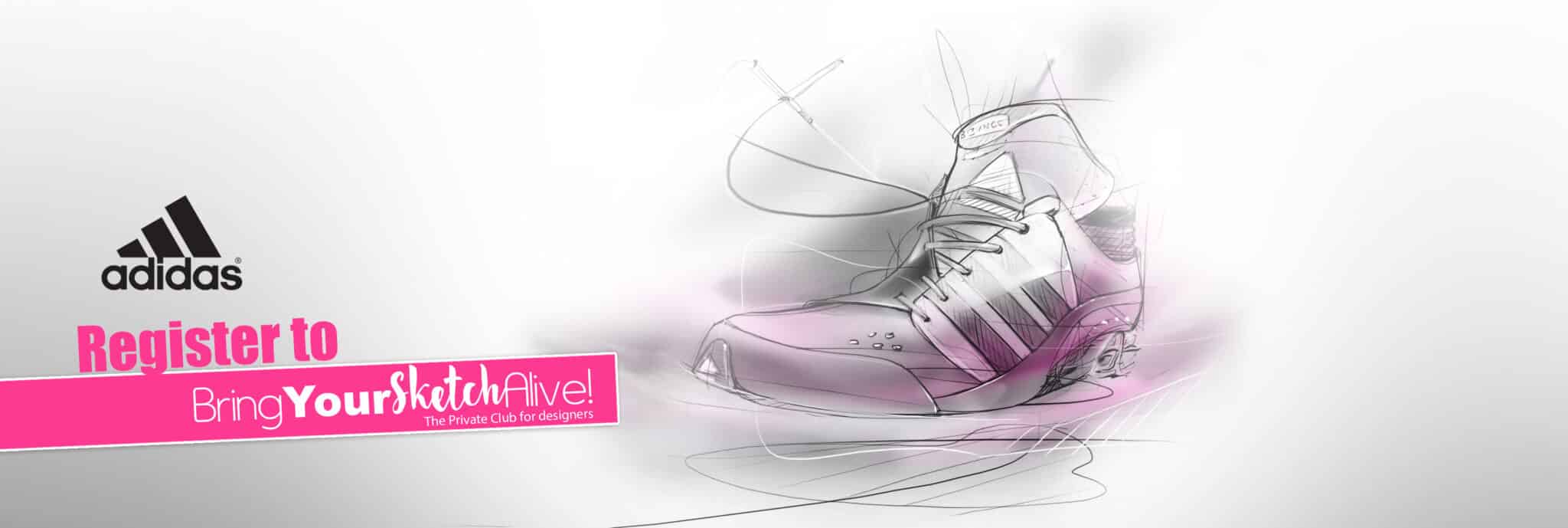
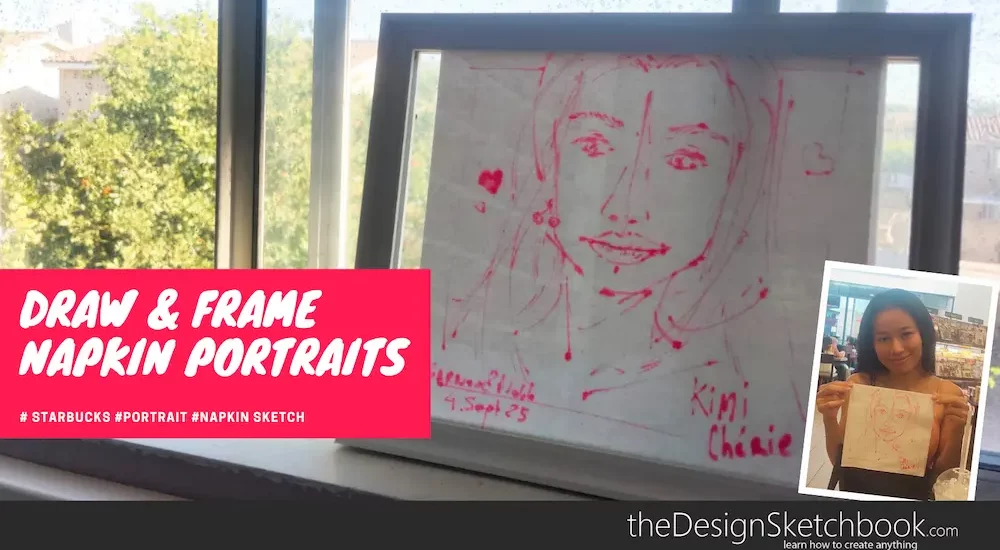
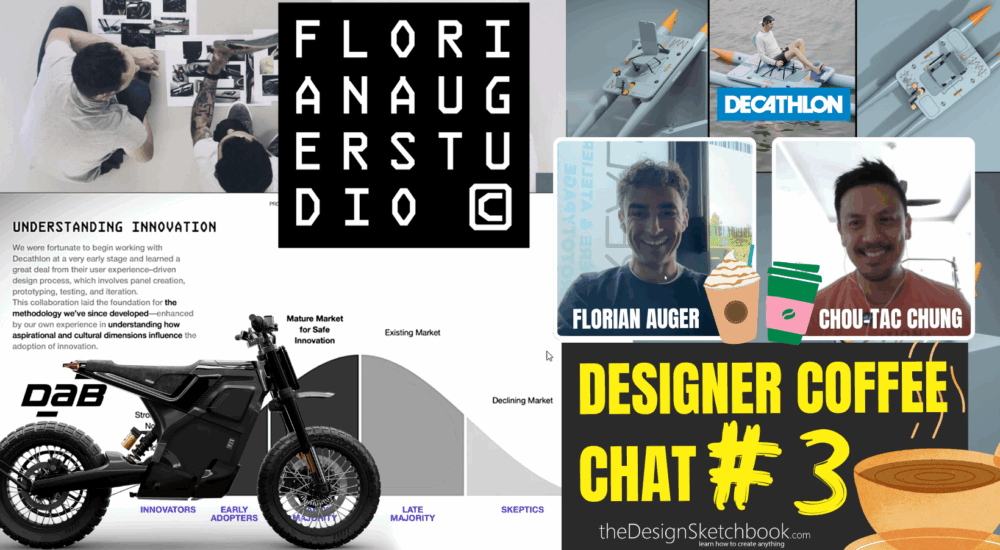

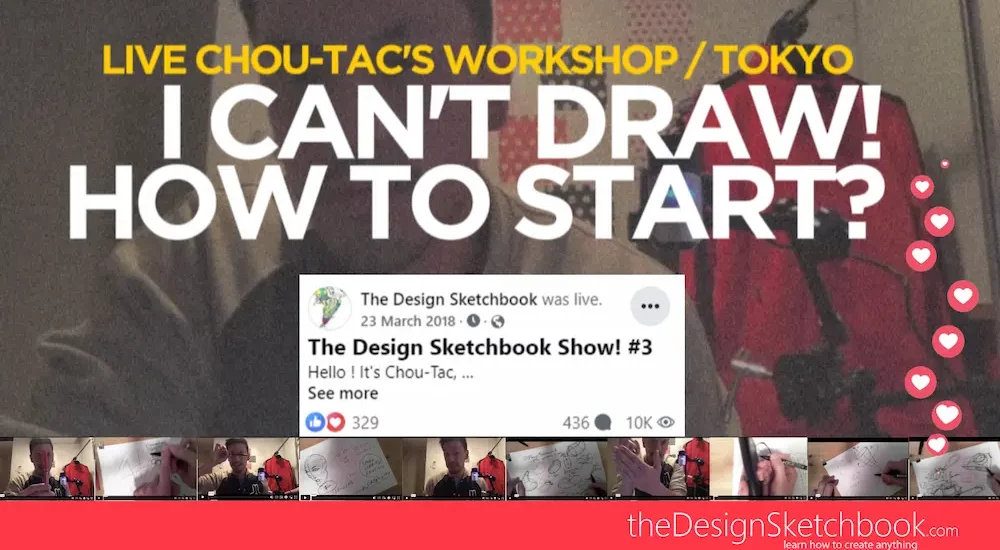



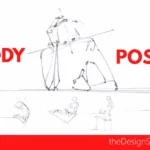

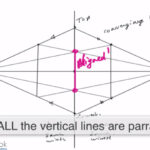
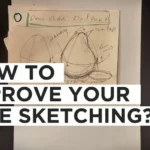
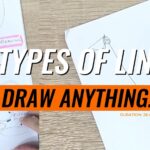



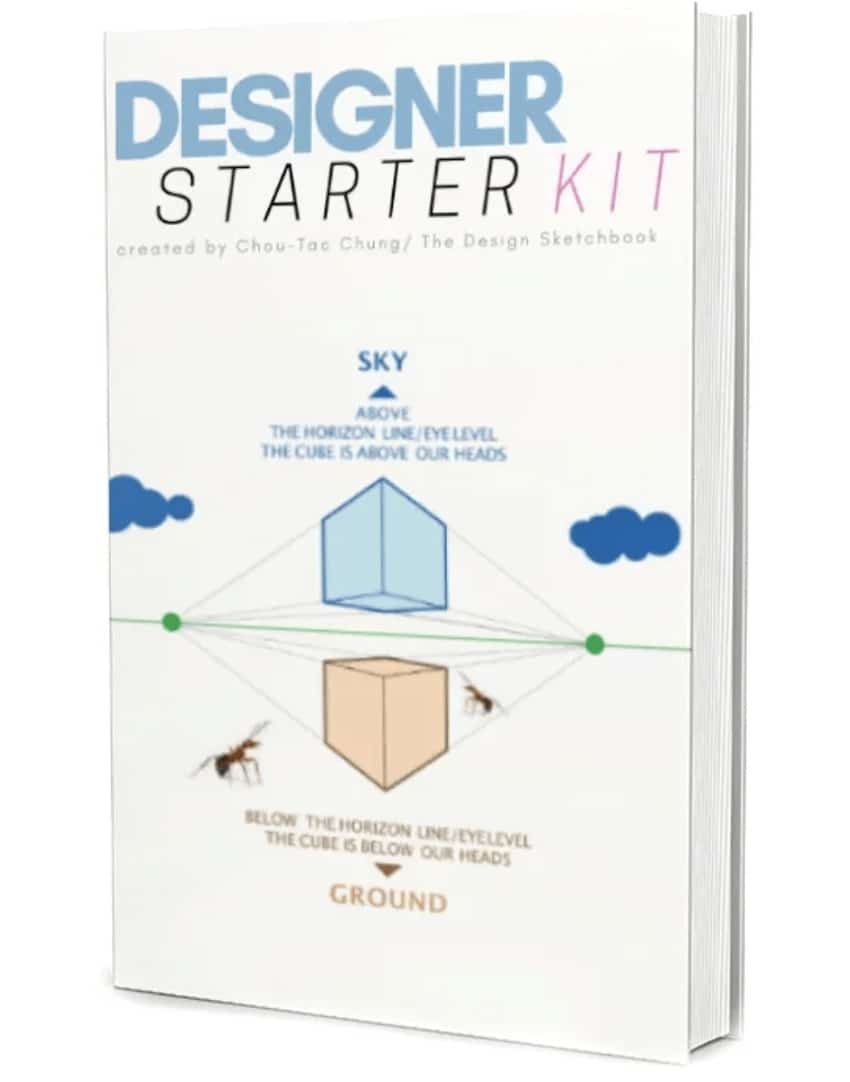
[…] And also Jongho LEE is a VIP member of my design sketching course SKETCH LIKE THE PROS, I can tell he’s totally passionate about Industrial Design Sketching! […]
Thank you, Mr.Chou, for replying us.
By the way, I had my CEED aptitude exam on last sunday. I found it easy. :)
Thanks to you. :)
Congratulation Krishnanunni !! :D